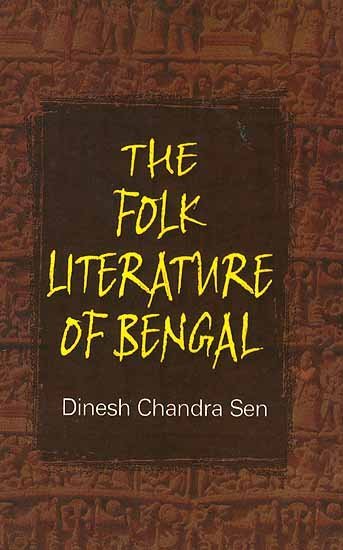Folk Tradition of Bengal (and Rabindranath Tagore)
by Joydeep Mukherjee | 2018 | 49,317 words | ISBN-10: 8186036989 | ISBN-13: 9788186036983
An English study regarding the Folk Tradition of Bengal and its influence on Rabindranath Tagore—an important Bengali polymath from the 19th century who excelled in philosophy, arts (painting), literature and music. This research tries to initiate the semantic aspect of “folk” through the help of various dictionaries....
Chapter 5.2 - Tagore’s Lalon Fakir
Recent Bangladesh or undivided Bangal was really a store house of Bauls. As long as Tagore was surrounded by Kolkata and its nearby places, he was not exposed to the world of folk, common people in general and Bauls in particular. Though he was antipathic towards jamindari responsibilities, fortunately it is that reluctant task which only unveils a world in which he longed to be throughout his life. He came in their close contact which itself twisted/brushed off the affluences of his soul. He tried to feel them not through head but through heart. Truly just like a genius he possessed a power of profundity and prophecy that prompts him to perceive through heart ‘the heart of man’, Lalon Fakir. Aforementioned discussion brings it to the notice of the readers that the confluence between Lalon and Rabindranath is every enigmatic. The bright light of research still fails to penetrate the mist of confusion and realized at last it is better to avoid such confrontation. However, his disciples namely Gagan Harkara, Gossain, Ramlal, Gosain Gopal to name a few had been able to quench Tagore’s thirst for Lalon Fakir. At that point of time he composed a small write up regarding Lalon Fakir. It is worth mentioning that he was very intimate to Maniruddin Shah for every detail about Lalon Fakir. Therefore, the research can conclude that this relationship with Lalon Fakir at this stage is three folded: collection of songs from different sources, creative discussion on them for understanding the pulse of his work and to promulgate those pieces according to the parameters and finally to implement the same in his writing as resource. Here the research can comment that the journey of Rabindranath Tagore to Lalon Fakir is a journey from source to resource, plain to plenty and simple to sublimity. Exampled are ample. Very popular example is Gora, a novel which not only begins with the mellifluous song of Baul but also conveys a sense of repentance to note it down. But Tagore in the novel invariably shares an impending effect of the song regarding ‘the heart of the matter’.
The impression is so deep drawn that he repeated in Patraput, Poem no 15:
Kotodin dekhechi oder sadhak k
Akla provater roudre sei Padma nadir dhare
Je nodir nei kono dwidha
Paka deuler puritan vit bhenge felte||
Dekhechi Aaktara hate choleche ganer dhara beye
‘Moner manush’ k sondhan korbar
Govir nijon pothe||
In Tagore’s own translation:
“One day I chanced to hear a song from a beggar belonging to the Baul sect of Bengal...What struck me in this simple song was a religious expression that was neither grossly concrete, full of crude details, nor metaphysical in its rarefied transcendentalism. At the same time it was alive with an emotional sincerity, it spoke of an intense yearning of the heart for the divine, which is in man and not in the temple or scriptures, in images or symbols... I sought to understand them through their songs, which is their only form of worship.”
Like Achin Pakhi (a bird coming from unknown origin), Aaktara (One string instrument) was the centre of this attention and action so much so that he himself became an instrument, an Aaktara where the thoughts regarding Bauls were instrumental to guide his poetic career. By blood Tagore is romantic searching for the remote, unknown and unseen. But the ‘nuances’ for the ‘remote, unknown and unseen’ Bauls enriched rather coloured the canvas of his creativity.
He sang:
Tumi raginir moto aso jao Aktarar tare tare||
Ei jantro tomar ruper khancha Dole bosonter batase||
Translation:
“You come and go like the tunes of a Raagini of classical music. Your stepping sounds get reverberated in the sting of Aaktara. This particular instrument brings a colour of spring and springs a sense of deep love in me.”
In another poem, the reference of tumi (you) associates both the feelings for the ‘known’ and ‘unknown’ and aktara vibrates vividly in the vortex of poet’s verve:
Achin pakhi tumi
Miloner khanchai thako-
Nana sajer khancha||
Sekhane biroho nityo thake pakhir khanchai,
Sthokito orar modhye||
Tar thikana nei,
Tar ovisar diginter pare
Sokol drishyer bilinotai||
Translation:
“You are really an unknown bird who always peeps through the breath. You stay in different types of cages of different colours. It is really sad that it has lost the power to fly. You are the most visible entity when nothing is visible.”
Therefore, ‘cage’ of Bauls really encaged Tagore from all corners. For example, the research can cite that Tagore translated the lines of the song when Sano San translated Gora. The research can further inform that this not an end. After translation he signed in it perhaps for the sake of an attestation of his own credit and consequent celebration.
